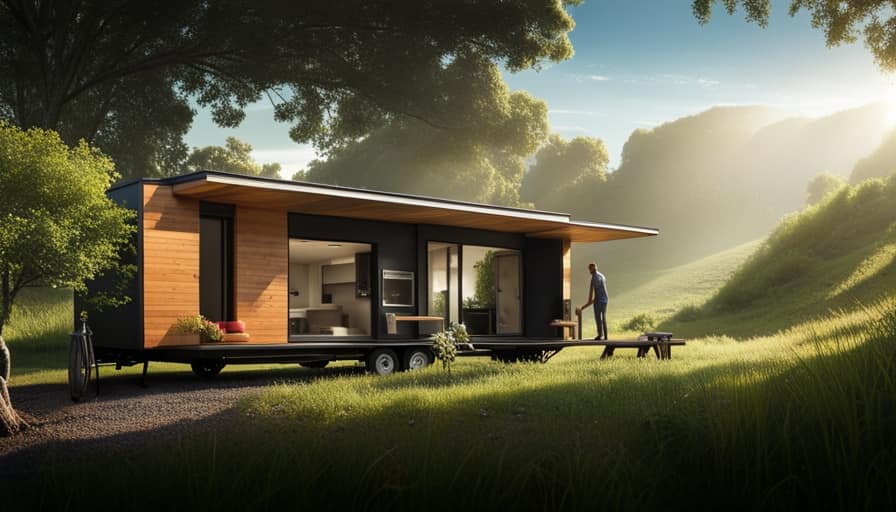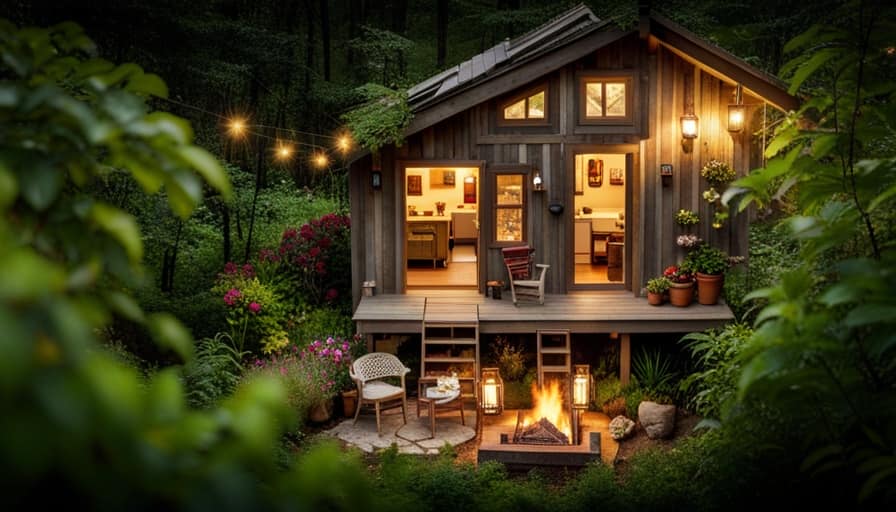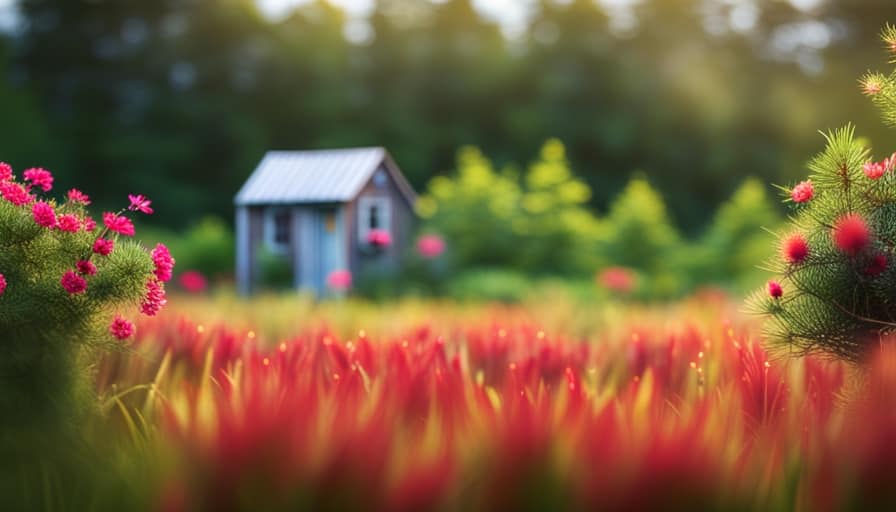Are you in search of a small house for sale? You’re not the only one! The tiny house movement has been gaining momentum, with around 10,000 tiny houses in the United States.
If you’re ready to downsize and embrace a simpler, more sustainable lifestyle, I’ve got you covered. In this article, I’ll show you the best ways to find your dream tiny house, from online listings and real estate agents to tiny house builders and communities.
Let’s get started on this exciting journey together!
Key Takeaways
- Online listings and marketplaces such as Zillow, Craigslist, and Tiny House Marketplace are convenient platforms to find a wide range of tiny houses for sale, offering essential details like price, location, and square footage.
- Local real estate agents and brokers have expertise in the local market trends of tiny houses and can provide valuable insights and assistance in navigating the purchasing process, including guidance on financing options specific to tiny houses.
- Reputable builders like Tiny Heirloom, Tumbleweed, and Escape specialize in constructing unique tiny homes, offering custom design options and financing choices, allowing you to have a say in the design and layout of your tiny home.
- Attending tiny house communities and events provides opportunities to connect with like-minded individuals, gain education on zoning regulations and financing options, tour different tiny house models for inspiration, and build a supportive community of tiny house enthusiasts.
Online Listings and Marketplaces
I can search for a tiny house for sale on online platforms like Zillow or Craigslist. These platforms provide a wide range of options for those looking to purchase a tiny house.

One of the first things to consider when searching for a tiny house is the financing options available. Many lenders now offer specific tiny house financing options, making it easier for buyers to secure a loan.
Additionally, if you’re interested in building your own tiny house, there are plenty of DIY tiny house building tips available online. These resources can help you navigate the process and provide valuable insights into construction techniques, materials, and design ideas.
Whether you choose to buy or build, online platforms offer a convenient and accessible way to find your dream tiny house.
Local Real Estate Agents and Brokers
Local real estate agents and brokers can provide valuable assistance in finding a tiny house for sale and navigating the purchasing process. Here are three reasons why working with a local real estate agent or broker is beneficial:
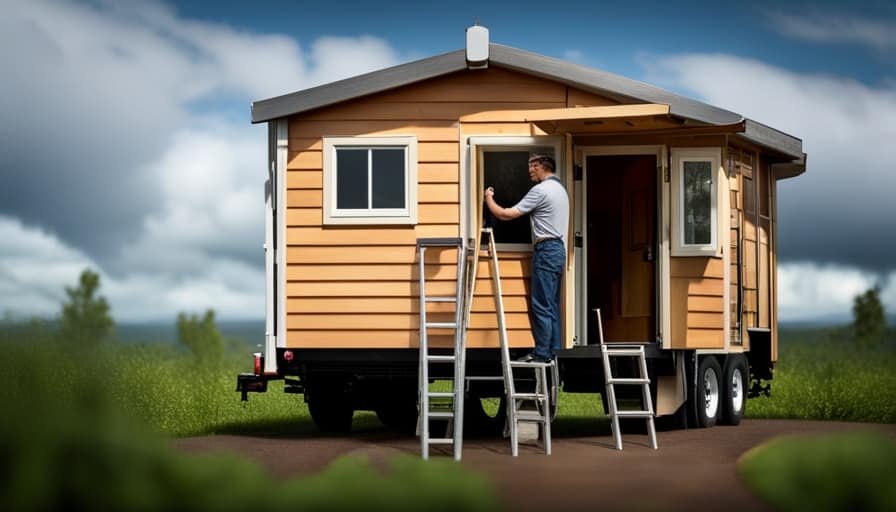
-
Expertise in the local market trends: Local agents and brokers have a deep understanding of the tiny house market in your area. They can provide insights into the current trends, pricing, and availability, helping you make informed decisions.
-
Access to exclusive listings: Real estate professionals often have access to listings that aren’t publicly available. They can help you discover hidden gems and off-market properties that fit your criteria.
-
Knowledge of financing options: Buying a tiny house involves unique financing considerations. Local agents and brokers can guide you through the process, connecting you with lenders who specialize in tiny house financing and helping you explore different options.
Tiny House Builders and Manufacturers
When searching for a tiny house, one option to consider is working with reputable tiny house builders and manufacturers that specialize in constructing these unique homes. These builders offer custom design options and often have financing options available to make owning a tiny house more accessible. By working with a builder or manufacturer, you can have a say in the design and layout of your tiny home, ensuring that it meets your specific needs and preferences. Additionally, many builders have experience in maximizing space and incorporating innovative storage solutions, making tiny living more comfortable and functional. To help you make an informed decision, here is a table showcasing four well-known tiny house builders and manufacturers:
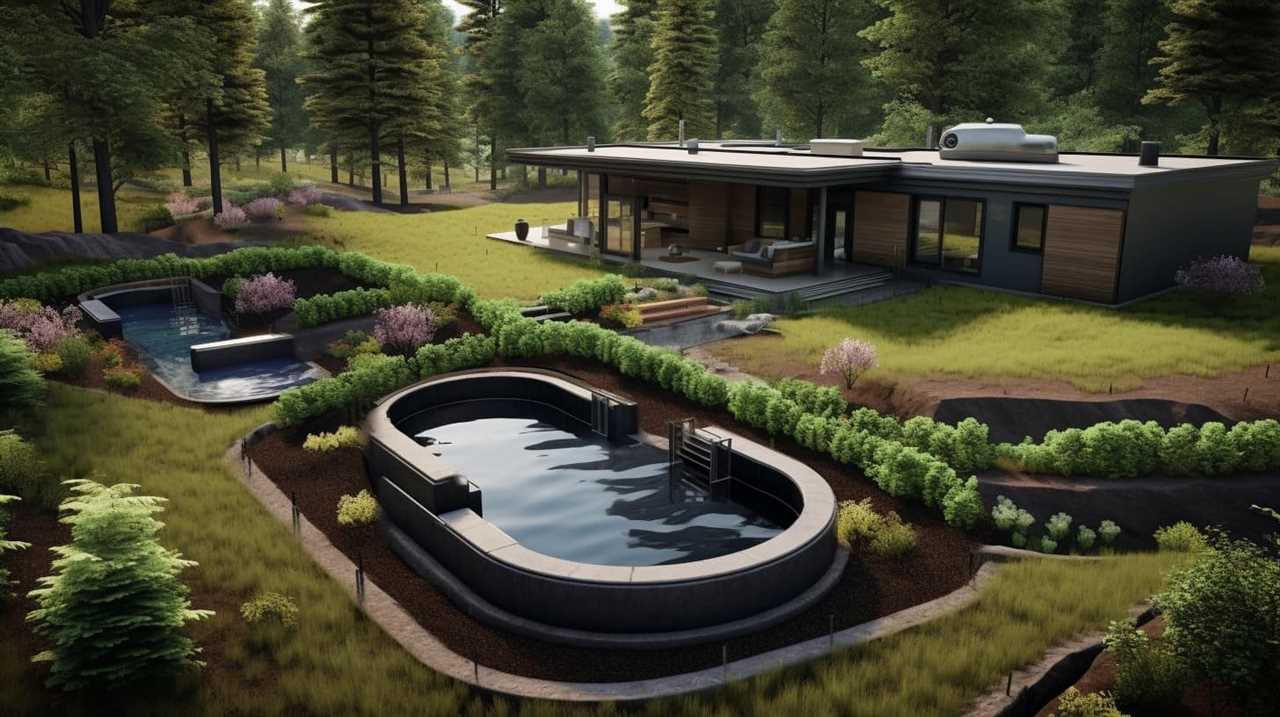
| Builder/Manufacturer | Location | Financing Options | Custom Design |
|---|---|---|---|
| Tiny Heirloom | Oregon | Yes | Yes |
| Tumbleweed | Colorado | Yes | Yes |
| Escape | Wisconsin | Yes | Yes |
| B&B Micro | Florida | No | Yes |
Tiny House Communities and Events
One of the best ways to immerse yourself in the tiny house lifestyle is by attending tiny house communities and events happening throughout the year. These gatherings provide an opportunity to connect with like-minded individuals, learn from experienced tiny house dwellers, and gain valuable insights into the world of tiny living.
Here are a few reasons why you should consider attending these events:
- Networking: Meet other tiny house enthusiasts and build a supportive community.
- Education: Gain knowledge on topics such as tiny house zoning regulations and financing options.
- Inspiration: Get inspired by touring different tiny house models and hearing success stories from those who’ve already made the transition.
By attending tiny house communities and events, you can gather valuable information and resources that will help you on your journey to living tiny.
Now, let’s explore how social media and online forums can further assist you in your quest for a tiny home.
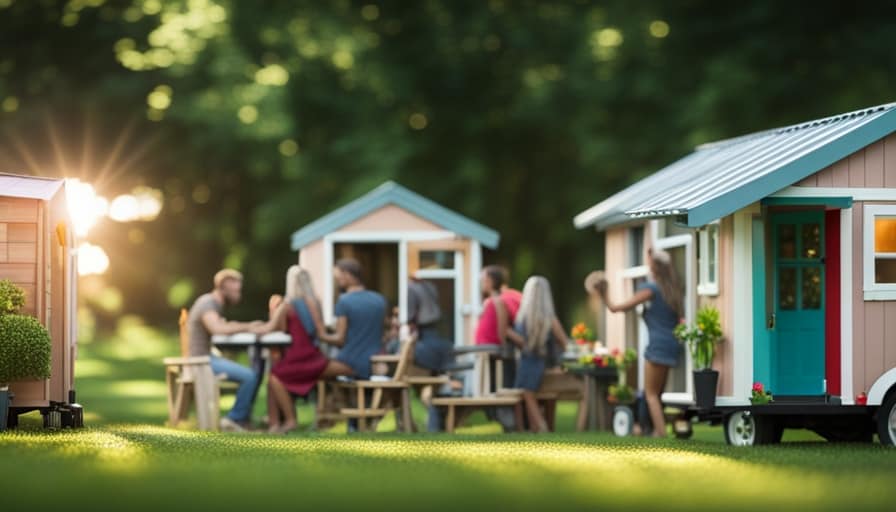
Social Media and Online Forums
I can easily connect with other tiny house enthusiasts and find valuable information through social media and online forums. These platforms provide a wealth of knowledge on local zoning regulations and financing options for tiny house purchases.
By joining relevant groups and forums, I can engage in conversations with experienced individuals who can offer advice and guidance on navigating the complexities of local zoning regulations. Additionally, I can learn about different financing options available for purchasing a tiny house, such as personal loans, RV loans, or even crowdfunding platforms specifically designed for tiny house enthusiasts.
Social media and online forums provide a supportive community where I can gather information, ask questions, and connect with like-minded individuals who share my passion for tiny house living.
Frequently Asked Questions
Are There Any Financing Options Available for Purchasing a Tiny House?
There are various financing options available for purchasing a tiny house, including alternative housing loans. These options provide flexibility and convenience for those looking to invest in the tiny house lifestyle.

What Are the Legal Requirements and Regulations for Living in a Tiny House?
Finding a tiny house for sale can be challenging, but it’s important to first understand the legal requirements and zoning regulations for living in one. This will ensure a smooth and hassle-free experience.
How Do I Transport a Tiny House to a Different Location?
To transport a tiny house to a different location, consider hiring professional movers who specialize in transporting tiny houses. They have the expertise and equipment to ensure a safe and efficient move.
Are There Any Restrictions on Where I Can Park or Place a Tiny House?
When it comes to parking or placing a tiny house, there are certain regulations and restrictions to consider. For example, some areas may have zoning laws that dictate where you can park or place a tiny house.
Can I Customize or Modify a Pre-Built Tiny House to Suit My Preferences?
Yes, you can customize or modify a pre-built tiny house to suit your preferences. There are various options available for customization, allowing you to create a space that meets your specific needs and style.
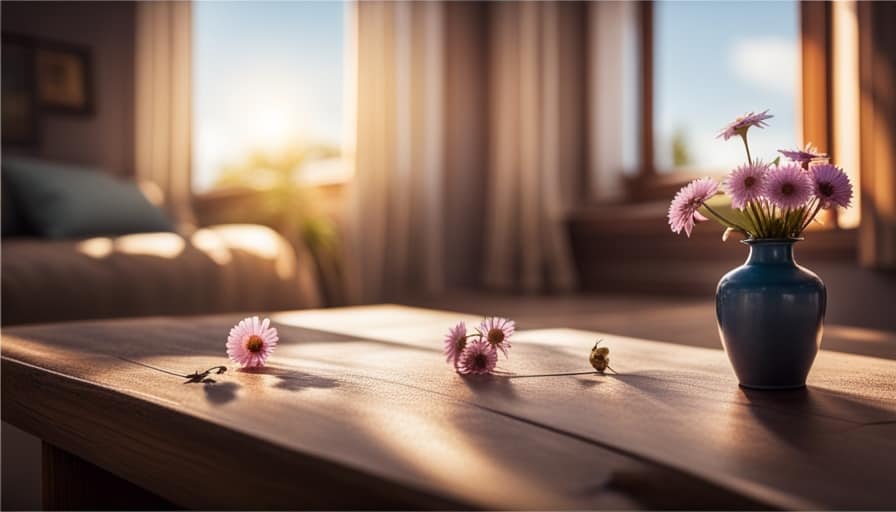
Conclusion
If you’re looking to buy a tiny house, there are several avenues you can explore. Online listings and marketplaces provide a wide range of options to choose from.
Local real estate agents and brokers can also assist you in finding the perfect tiny house.
Additionally, contacting tiny house builders and manufacturers can lead you to available properties.
Don’t forget to check out tiny house communities and events for potential leads.

With so many resources available, finding your dream tiny house is just a click away.
I’m Theodore, and I love tiny houses. In fact, I’m the author of Tiny House 43, a book about tiny houses that are also tree houses. I think they’re magical places where imaginations can run wild and adventures are just waiting to happen.
While tree houses are often associated with childhood, they can be the perfect adult retreat. They offer a cozy space to relax and unwind, surrounded by nature. And since they’re typically built on stilts or raised platforms, they offer stunning views that traditional homes simply can’t match.
If you’re looking for a unique and romantic getaway, a tree house tiny house might just be the perfect option.
